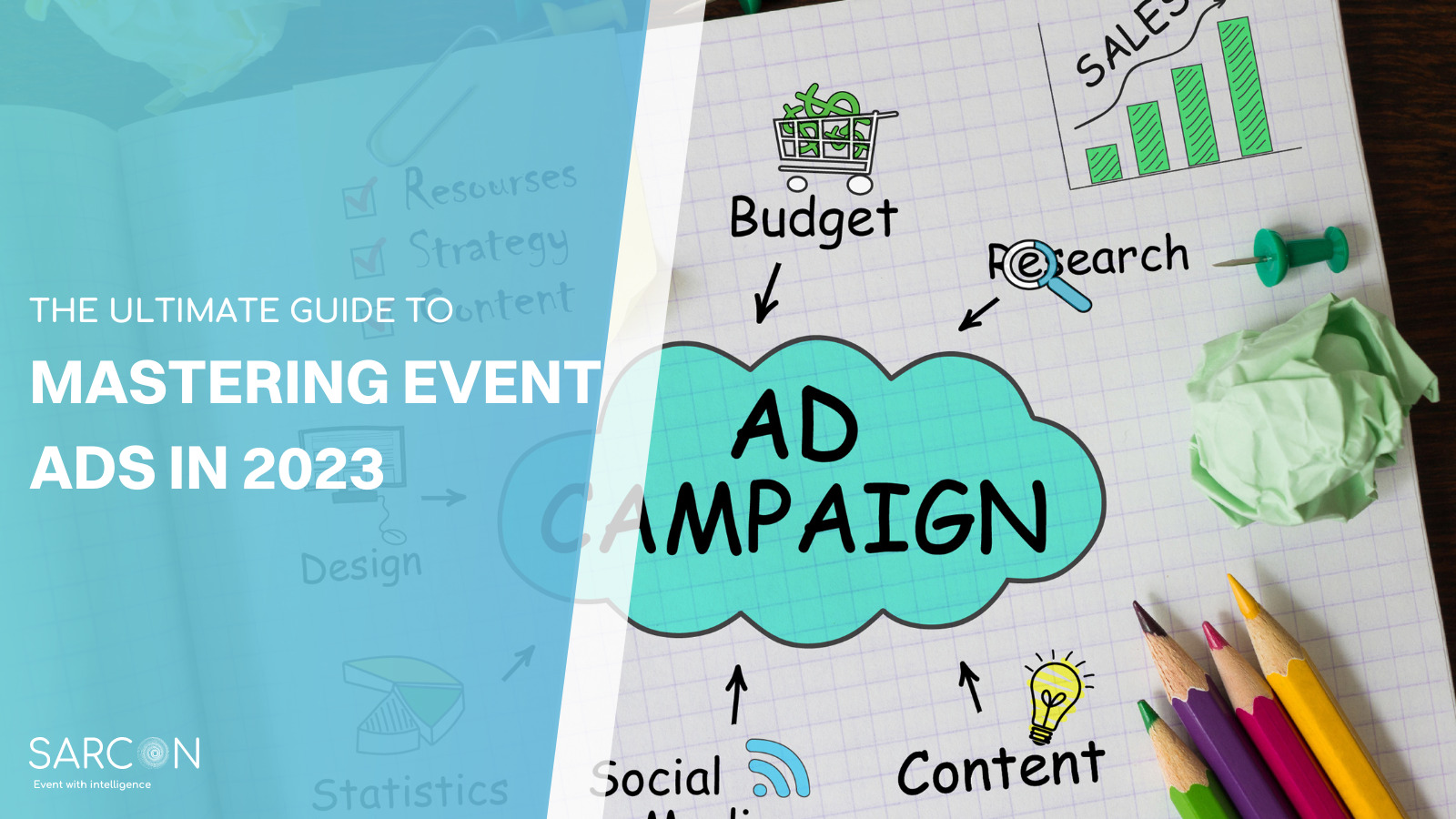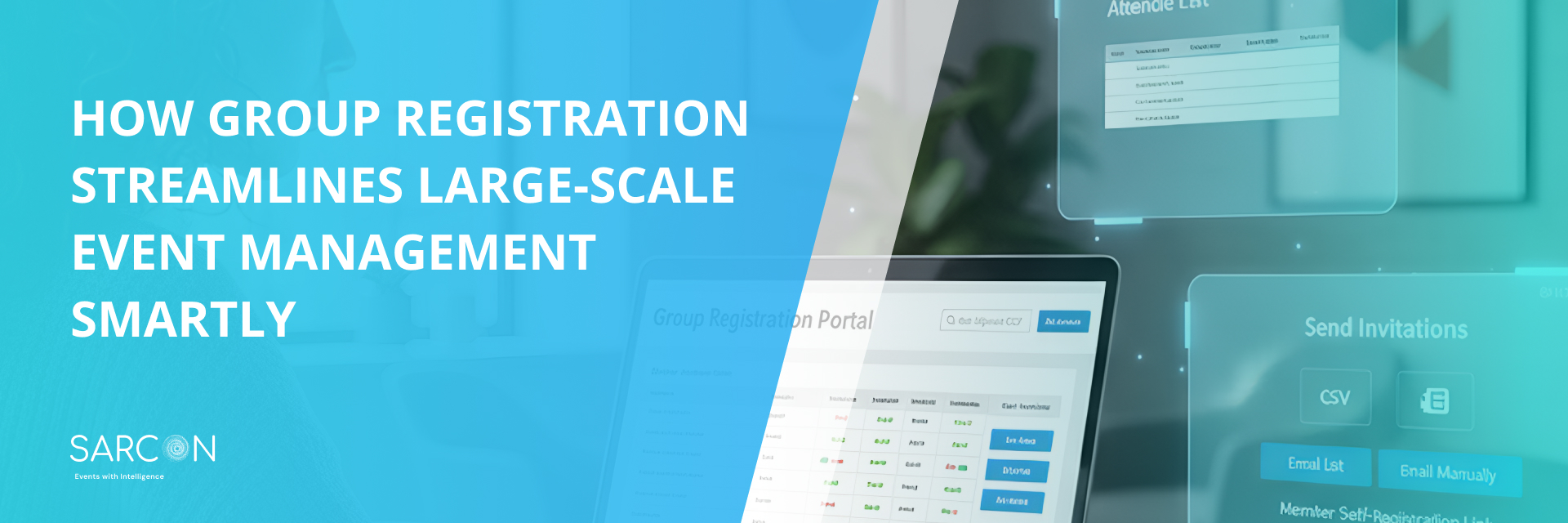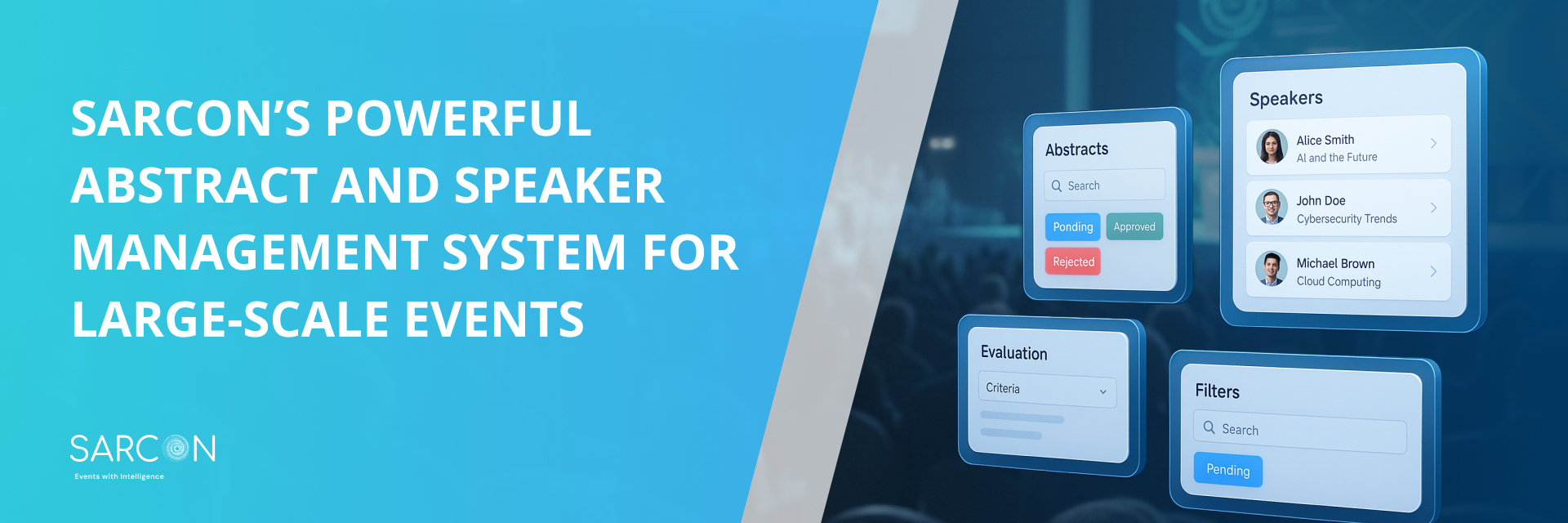Organizing a successful event involves more than just choosing the right venue and scheduling the date. One crucial aspect that often decides the fate of your event is how well you advertise it to your target audience.Whether it’s a conference, concert, charity fundraiser, or product launch, mastering event advertising has become essential for amplifying your event’s reach and creating buzz among your target audience. In this blog, we will delve into the fundamental components of impactful event ads and explore the psychological aspects that influence your audience’s decision-making process. Whether you’re an experienced marketer or a first-time event organizer, this guide will equip you with invaluable insights, actionable tips, and practical techniques to maximize your event’s exposure, boost attendance, and leave a lasting impression on your audience. But first let’s understand what’s event advertising.
Event Advertising Vs Event Marketing
Event advertising and event marketing are related concepts but have distinct purposes and strategies in promoting an event.
Event Advertising:
Event advertising focuses on promoting the event itself to attract attendees and create awareness. It primarily involves paid promotional activities that aim to reach a broader audience and generate interest in the event. Advertising channels commonly used for event promotion include social media ads, print media, radio, television commercials, online banners, and billboards. The goal of event advertising is to create excitement, inform potential attendees about the event’s date, time, location, and key attractions, and ultimately drive ticket sales or registrations.
Event Marketing:
Event marketing, on the other hand, is a broader and more comprehensive approach to promoting an event. It includes various strategies, both paid and unpaid, to attract attendees, sponsors, and partners. Event marketing incorporates advertising but goes beyond it. It involves creating and implementing a complete marketing plan that encompasses branding, public relations, content marketing, social media engagement, email campaigns, influencer outreach, and other promotional efforts.
Event marketing aims to build a strong brand identity for the event, establish a positive reputation, and create lasting relationships with the target audience. This approach also focuses on enhancing the overall attendee experience and encouraging word-of-mouth marketing by delivering a memorable and valuable event.
For more info read : Event Marketing Guide 2023
Understanding the Power of Event Ads
Event ads are a versatile and engaging tool that businesses can utilize to create buzz and drive attendance to their events. In recent years, the widespread adoption of social media and digital advertising has transformed event promotion, opening up a world of possibilities for organizers. These targeted ads allow event organizers to reach their desired audience with pinpoint accuracy, focusing on specific demographics, interests, and geographical locations. Through the power of event ads, organizers can engage potential attendees, generate excitement, and increase attendance rates. By utilizing the vast reach and interactive nature of online advertising, events can now garner widespread attention, leading to a higher level of success and community engagement. With data-driven insights and analytics at their disposal, organizers can fine-tune their advertising strategies, ensuring maximum impact and return on investment.
Defining Your Event Objectives
Before diving into the world of event advertising, it’s crucial to clearly define your event objectives. Every event is unique, and understanding what you aim to achieve is paramount to crafting an effective advertising strategy. What are you trying to achieve with the event? Are you looking to increase ticket sales, raise awareness for a cause, attract sponsors, or enhance your brand’s visibility? These objectives act as the guiding compass that steers the entire event planning process.
Each objective will require a tailored strategy and targeted messaging to resonate with your intended audience. By taking the time to define your event objectives from the outset, you set the stage for a successful event advertising campaign that will skyrocket your event’s impact and bring you closer to your ultimate goals.
Identifying Your Target Audience
Knowing your target audience is paramount in creating effective event ads. Analyze your event’s theme, content, and purpose to identify the demographics and interests that align with your goals. Understanding your audience will enable you to craft tailored messages that resonate with potential attendees, increasing the likelihood of them engaging with your event.
Crafting Compelling Event Advertisements
Effective event ads have a few common characteristics: they are visually appealing, informative, and evoke a sense of urgency. When creating your event ads, keep the following best practices in mind:
- Optimize Landing Pages : Your event ads should lead interested users to dedicated landing pages that provide detailed information about the event and facilitate easy registration or ticket purchase. Optimize these landing pages for mobile devices, as a significant portion of users access the internet through their smartphones. Keep the design clean, the navigation seamless, and the information concise.
- Captivating Visuals: A picture is worth a thousand words, so choose high-quality images or videos that capture the essence of your event. Showcase previous event highlights, speaker profiles, or sneak peeks to entice potential attendees.
- Clear and Concise Copy: Use concise and compelling language to convey the essential details of your event. Include key information such as the event name, date, location, and a call-to-action (CTA) that encourages users to take immediate action, like buying tickets or registering.
- Create a Sense of Urgency: Utilize phrases like “Limited Seats Available” or “Early Bird Discounts Ending Soon” to create a sense of urgency that motivates potential attendees to act swiftly.
- A/B Testing: Experiment with different ad creatives, copy variations, CTAs, and even targeting parameters through A/B testing. This iterative approach allows you to identify the most effective elements and fine-tune your event ad strategy for optimal performance.
Utilizing Psychological Triggers:
Understand the psychological triggers that influence decision-making and use them strategically in your event ads. Some effective triggers include:
- Emphasize Benefits: Focus on the unique benefits and experiences your event offers. Highlight how attending your event will enrich the lives of your audience and fulfill their aspirations.
- Scarcity: Create a sense of urgency by highlighting limited seats or early-bird discounts. People are more likely to act quickly if they fear missing out on a great opportunity.
- Social Proof: Showcase testimonials or endorsements from previous attendees, influencers, or industry experts. Social proof enhances your event’s credibility and encourages potential attendees to trust your event.
- FOMO (Fear of Missing Out): Tap into the fear of missing out by teasing exclusive content or surprise announcements during the event. FOMO can significantly boost event registrations.
Leveraging Social Media Platforms
Social media platforms have revolutionized the way events are promoted. With billions of users active daily, they offer a potent and cost-effective means of reaching a vast audience. Here are some tips for leveraging different social media platforms:
- Facebook Events: Create an engaging Facebook Event page with all the necessary details. Encourage attendees to RSVP and share the event with their networks, exponentially increasing your event’s exposure.
- Instagram Stories: Utilize Instagram’s interactive features, such as polls, countdown stickers, and swipe-up links, to engage with your audience and generate excitement about your event.
- Twitter Chats: Host Twitter chats with event speakers or sponsors to build anticipation and foster conversations around your event. Use event-specific hashtags to streamline discussions and create a trending topic.
- LinkedIn Marketing: Utilize LinkedIn’s sponsored content and InMail features to target professionals relevant to your event’s theme. LinkedIn is an excellent platform for promoting B2B events and networking opportunities.
- Showcase Event Highlights Through Stories: Social media stories are a powerful tool for showcasing behind-the-scenes moments and event highlights. Uncover how to use stories effectively to build anticipation and excitement.
- Collaborate with Influencers and Partners: Influencer marketing can be a powerful tool to expand your event’s reach. Collaborate with influencers or industry thought leaders who align with your event’s theme to promote your event to their followers. These influencers can create engaging content, share event details, and host giveaways to drive interest and attendance. Moreover, partnering with relevant organizations or local businesses can help broaden your event’s reach. Cross-promote the event through your partners’ networks and leverage their audience to boost attendance.
Utilizing Paid Advertising
While organic reach on social media can be powerful, consider supplementing your efforts with paid advertising to ensure maximum event visibility. Platforms like Facebook Ads, Google Ads, and Instagram Ads offer a range of targeting options to reach your ideal audience.
- Implementing Targeted Advertising Strategies :The heart of paid advertising lies in its ability to deliver tailored messages directly to the people who matter most – your potential attendees. By delving into audience segmentation, retargeting, and the creation of lookalike audiences, you can orchestrate your ad campaigns to resonate with your desired demographic.
- Audience Segmentation: Gone are the days of generic, one-size-fits-all ads. With audience segmentation, you can divide your target audience into distinct groups based on characteristics like demographics, interests, and behaviors. This division empowers you to craft ads that speak directly to the unique needs and desires of each segment, amplifying the relevance and impact of your message.
- Retargeting: Not everyone who encounters your event ad will take immediate action. Retargeting, however, extends a helping hand to those who showed initial interest but haven’t yet committed. By placing your event back in front of these individuals, you can nurture their intent, bolstering the likelihood of conversion.
- Lookalike Audiences: A fascinating innovation in audience targeting, lookalike audiences leverage the characteristics of your existing attendees or customer base to find new, similar individuals who might be interested in your event. This approach broadens your reach while maintaining a high degree of relevance.
- Setting Realistic Advertising Budgets: As with any financial undertaking, prudent budgeting is paramount in event advertising. A well-considered budget aligns your promotional efforts with your event’s goals and expectations. Through meticulous planning, you can ensure your advertising investment is channeled where it matters most.
- Aligning with Event Goals: Your event’s goals should shape your advertising budget. Whether it’s driving ticket sales, increasing brand awareness, or boosting engagement, a clearly defined objective will guide the allocation of your resources.
- Understanding Cost Structures: Different platforms offer distinct cost structures. From cost-per-click (CPC) to cost-per-impression (CPM) models, understanding the economics of each platform empowers you to make informed decisions.
- Tracking and Analyzing Ad Performance:In the realm of paid advertising, the age-old adage “what gets measured, gets managed” holds true. Tracking and analyzing ad performance isn’t just a good practice; it’s a pivotal one. This data-driven approach enables you to fine-tune your campaigns for optimal outcomes.
- Key Metrics: Dive into the metrics that matter – click-through rates (CTR), conversion rates, impressions, and more. By understanding these metrics, you can glean insights into how well your ads are resonating with your audience.
- Iterative Optimization: Armed with performance data, you have the power to continuously optimize your campaigns. Tweak ad copy, adjust targeting parameters, and experiment with different visuals based on the feedback provided by the numbers.
Strategies to Keep in Mind
- Leverage Remarketing: The journey from curiosity to commitment is rarely instantaneous. Not all users who interact with your event ads will take immediate action. This is where remarketing steps in. By implementing remarketing strategies, you can re-engage with users who previously interacted with your event ads or visited your event page. Through various ad platforms, you have the opportunity to display personalized ads tailored to their interests, gently reminding them of the value your event offers. Remarketing helps convert those potential attendees who need a little nudge to take the plunge.
- Utilize Geo-Targeting: The beauty of event marketing lies in its ability to connect with people in specific locations. Whether your event is local, regional, or international, geo-targeting can be a game-changer. This strategy involves tailoring your event ads to be shown only to users in particular geographic areas. This ensures that your ads are seen by individuals who are not only interested in your event but also are likely to attend due to their proximity. Geo-targeting enhances the relevancy of your ads and minimizes wastage by narrowing down your focus to the right audience at the right location.
- Encourage Early Bird Registrations and Ticket Sales: Creating a sense of urgency and exclusivity is a tried-and-true method to boost event attendance. Craft a dedicated landing page that showcases all the compelling reasons to attend your event and highlights the benefits of early bird registration. Direct your ad traffic to this page, making it convenient for users to secure their spots. By offering discounted rates or exclusive perks for early registrations, you incentivize commitment and anticipation among your audience.
- Run Contests and Giveaways: Contests and giveaways can generate excitement and buzz around your event. Plan and execute contests that align with the theme of your event and the interests of your audience. Social media platforms are excellent arenas for hosting such contests, as they have the potential to go viral and extend your event’s reach organically. The allure of winning something can be a compelling reason for users to not only engage with your ads but also share them with their network, multiplying your event’s visibility.
- Engage with Your Audience Through Chatbots: In the age of instant communication, providing quick and accurate responses to inquiries is vital. This is where chatbots come to the rescue. Integrating chatbots into your event ads enables you to provide instant assistance and engage with potential attendees in real-time. Chatbots can answer frequently asked questions, guide users through the registration process, and even personalize event recommendations based on user preferences. The seamless and interactive experience chatbots offer can contribute significantly to enhancing user engagement and, consequently, event attendance.
Conclusion
In conclusion, mastering event ads is a multifaceted endeavor that demands a deep understanding of your audience, creativity, and a data-driven approach. By employing the strategies outlined in this comprehensive guide, you can amplify your event reach, engage a broader audience, and ensure the resounding success of your next event. Embrace the power of digital advertising and unleash the full potential of your events
FAQs
Q. When is the best time to start running event ads?
The timing of your event ads can significantly impact their effectiveness. Ideally, you should begin your ad campaign well in advance to build anticipation and generate early interest. The exact timing will vary depending on the nature of your event, but generally, starting the ads 4-6 weeks before the event is a good practice.
Q.What type of ad content works best for promoting events?
Visual content is crucial for event ads. High-quality images or videos showcasing the event’s highlights, speakers, performers, or previous event footage can capture the audience’s attention. Additionally, using clear and concise ad copy with a strong call-to-action will encourage users to take action.
Q. How much budget should I allocate for event ads?
Budget allocation depends on various factors, including the scale of your event, the advertising platform, and your objectives. It’s essential to set a realistic budget that allows you to reach a significant portion of your target audience while considering the potential return on investment (ROI) from the event.
Q. How can I measure the success of my event ad campaign?
Key performance indicators (KPIs) to measure your campaign’s success include the number of event registrations, click-through rate (CTR), conversion rate, and cost per acquisition (CPA). Utilize the analytics provided by the advertising platforms to track these metrics and evaluate the campaign’s performance.
Q. What are some common mistakes to avoid in event ad campaigns?
Avoiding generic or low-quality visuals, neglecting to define a clear target audience, setting unrealistic budget expectations, and neglecting to monitor and adjust your ad campaign as needed are common mistakes to avoid. Regularly analyze the campaign’s performance and make data-driven adjustments to improve results.



